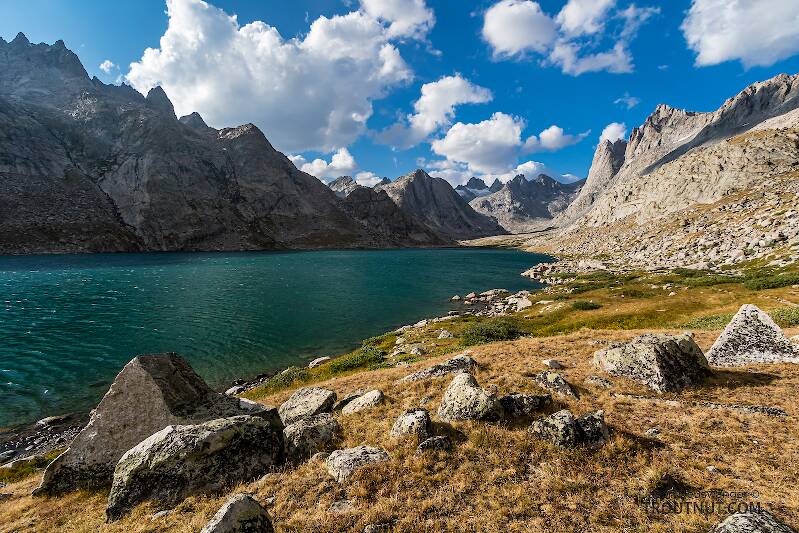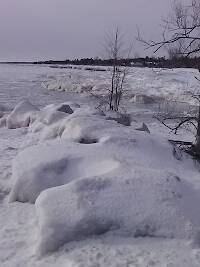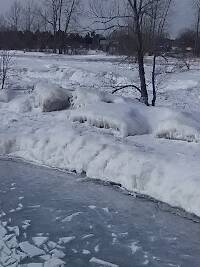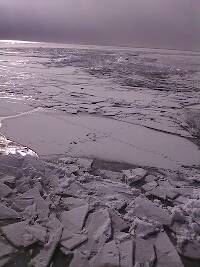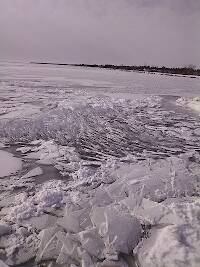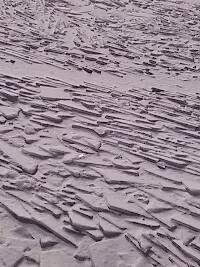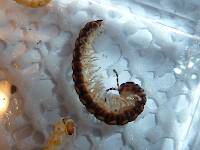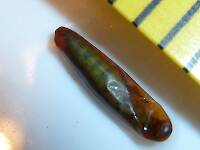
Salmonflies
Pteronarcys californica
The giant Salmonflies of the Western mountains are legendary for their proclivity to elicit consistent dry-fly action and ferocious strikes.
Featured on the forum


Troutnut is a project started in 2003 by salmonid ecologist Jason "Troutnut" Neuswanger to help anglers and
fly tyers unabashedly embrace the entomological side of the sport. Learn more about Troutnut or
support the project for an enhanced experience here.

This is a really strange specimen. I would guess it's one of the dry caddis pupa that scoots across the surface of the water as a pupa rather than emerging right away. Its "wing pads" sure don't look right, though. Maybe they're deformed and that's why I was able to find this one as a pupa in the first place. It also looks like it might be a caddis adult missing its wings, but since I found three of them, that kind of rules out such an anomalous maiming.
I found this one and one other on a midstream rock. The previous day, I caught a similar creature kicking around on the water's surface.
This one died and shriveled a little bit before I could photograph it, but it's basically in its original shape.
I found this one and one other on a midstream rock. The previous day, I caught a similar creature kicking around on the water's surface.
This one died and shriveled a little bit before I could photograph it, but it's basically in its original shape.
Ictodd
Posts: 1
Posts: 1
Ictodd on Jun 7, 2007June 7th, 2007, 4:10 am EDT
Ross (1944) mentions that Dolophilodes (Trentonius) distinctus adults "...remarkable b/c of the production of adults during the entire year, incl. the winter months, and the wingless condition of most of the females.....records indicate the females produced during the colder months are all wingless.....Winged females have been taken during the warmer months of the year." He goes on to mention that wing presence is caused by temperature reactions influencing late larvae. Was it a really cold stream? Seems late for ambient air influences.
Troutnut on Jun 7, 2007June 7th, 2007, 5:04 am EDT
The stream was not unusually cold, although the previous night was.
Jason Neuswanger, Ph.D.
Troutnut and salmonid ecologist
Troutnut and salmonid ecologist
Rjs887
Posts: 1
Posts: 1
Rjs887 on Nov 22, 2007November 22nd, 2007, 1:10 pm EST
We get fantastic hatches of these on the Farmington river here in Connecticut. Two broods, summer and winter and the fish are always willing to eat the female pupa that skitters across the water. Starting in November the action gets really hot and continues through the winter till march. Colder days they come off later in the morning and can continue throughout the day, warmer days, they will come at daybreak.
GONZO on Nov 22, 2007November 22nd, 2007, 2:41 pm EST
Hi Rich,
I've been hoping that we would eventually hear from a Farmington angler about these unusual caddisflies. Although they are quite common and widespread, it seems that nobody knows them as well or fishes them as often as the folks on the Farmington. These strange little buggers frustrated me for several seasons on the Lehigh, until I learned about the Farmington hatch and made the connection. Do you have a favorite imitation?
Best,
Gonzo
I've been hoping that we would eventually hear from a Farmington angler about these unusual caddisflies. Although they are quite common and widespread, it seems that nobody knows them as well or fishes them as often as the folks on the Farmington. These strange little buggers frustrated me for several seasons on the Lehigh, until I learned about the Farmington hatch and made the connection. Do you have a favorite imitation?
Best,
Gonzo
Quick Reply
Related Discussions
Topic
Replies
Last Reply
12
Jun 13, 2007
by Litobrancha
by Litobrancha
1
Sep 9, 2008
by GONZO
by GONZO
6
Jan 4, 2010
by Konchu
by Konchu

